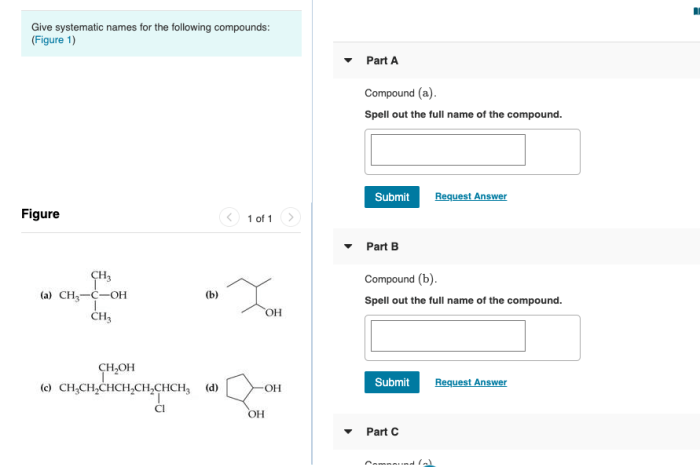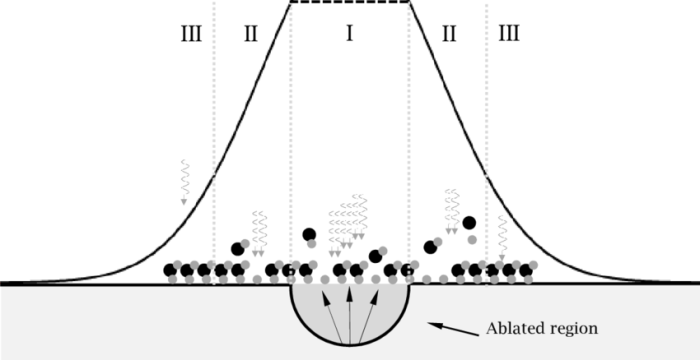Give the systematic names of these compounds. spelling counts – In the realm of chemistry, the systematic nomenclature of compounds plays a pivotal role in ensuring clear and unambiguous communication. Established by the International Union of Pure and Applied Chemistry (IUPAC), these naming conventions provide a standardized language for chemists to describe and identify chemical substances with precision.
This comprehensive guide delves into the fundamental principles of systematic nomenclature, exploring the rules and conventions governing the naming of inorganic and organic compounds, including alkanes, alkenes, alkynes, coordination complexes, and polyatomic ions. By mastering these principles, chemists can effectively convey complex chemical structures and facilitate seamless collaboration within the scientific community.
Introduction

Systematic nomenclature is a standardized system of naming chemical compounds that provides a clear and concise way to identify and describe them. It is essential for communication among chemists, ensuring that everyone uses the same terminology and understands the structure and properties of the compounds being discussed.
The International Union of Pure and Applied Chemistry (IUPAC) is the organization responsible for establishing and maintaining the rules of systematic nomenclature. IUPAC’s goal is to create a system that is logical, consistent, and easy to use.
Basic Principles of Systematic Nomenclature

The basic principles of systematic nomenclature include:
- Using prefixes to indicate the number of atoms in a molecule
- Using suffixes to indicate the oxidation state of an element
- Naming cations first, followed by anions
Naming Simple Inorganic Compounds
Simple inorganic compounds are typically composed of a metal and a non-metal. The metal is named first, followed by the non-metal. The suffix -ide is added to the non-metal name.
For example, the compound NaCl is named sodium chloride. Sodium is the metal, and chlorine is the non-metal.
Naming Cations and Anions
Cations are positively charged ions, while anions are negatively charged ions. Cations are named by the metal name, while anions are named by the non-metal name with the suffix -ide.
For example, the cation Na+ is named sodium, while the anion Cl- is named chloride.
Using Prefixes to Indicate the Number of Atoms, Give the systematic names of these compounds. spelling counts
Prefixes are used to indicate the number of atoms in a molecule. The prefixes are:
- mono-
- di-
- tri-
- tetra-
- penta-
- hexa-
For example, the compound N2O5 is named dinitrogen pentoxide. This indicates that the molecule contains two nitrogen atoms and five oxygen atoms.
Using Suffixes to Indicate the Oxidation State
Suffixes are used to indicate the oxidation state of an element. The suffixes are:
- -ous
- -ic
The suffix -ous is used for the lower oxidation state, while the suffix -ic is used for the higher oxidation state.
For example, the compound Fe2O3 is named iron(III) oxide. This indicates that the iron is in the +3 oxidation state.
Essential FAQs: Give The Systematic Names Of These Compounds. Spelling Counts
What is the importance of systematic nomenclature in chemistry?
Systematic nomenclature provides a standardized language for chemists to describe and identify chemical substances with precision, facilitating clear communication and collaboration within the scientific community.
Who established the rules for systematic nomenclature?
The International Union of Pure and Applied Chemistry (IUPAC) established the rules and conventions for systematic nomenclature.
What are the basic principles of systematic nomenclature for inorganic compounds?
The basic principles include naming simple inorganic compounds, using prefixes to indicate the number of atoms, and suffixes to indicate the oxidation state of an element.
How are organic compounds named according to systematic nomenclature?
Organic compounds are named based on their parent chain, prefixes for alkyl groups, and suffixes for functional groups.
What is the significance of Greek prefixes in systematic nomenclature?
Greek prefixes are used in systematic nomenclature to indicate the number of ligands in a coordination complex.


